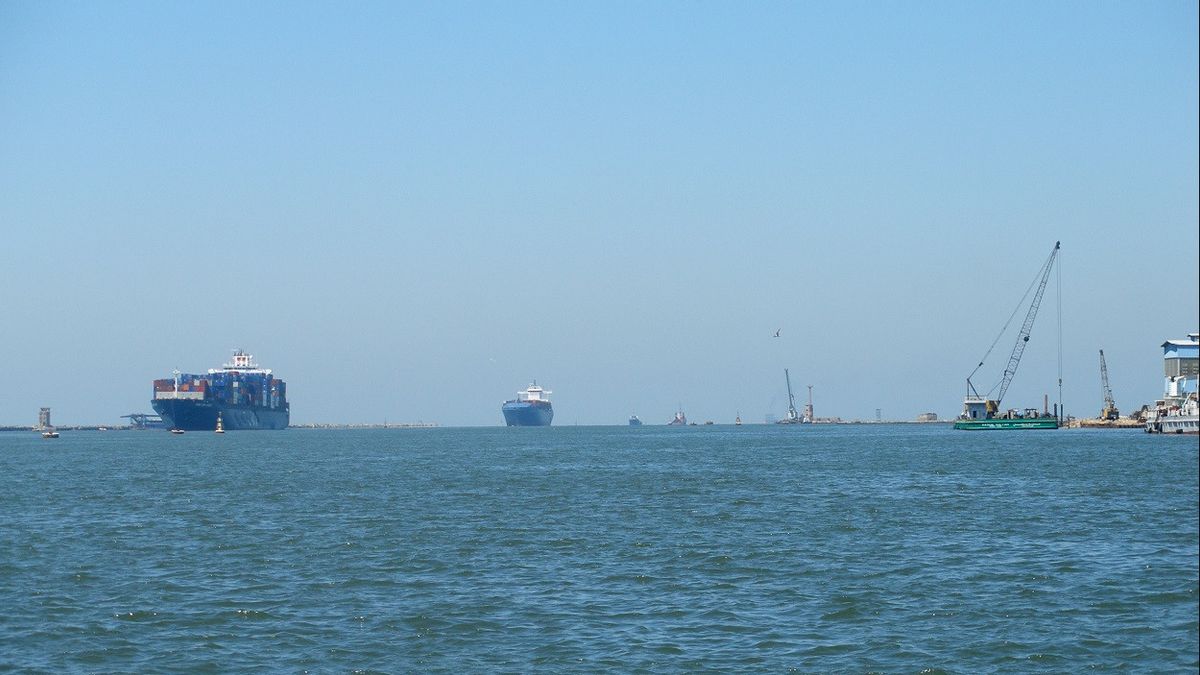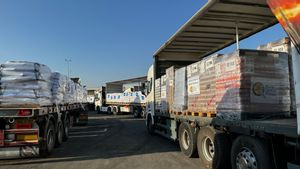JAKARTA - The Suez Canal Authority, Egypt reported last year's revenue of US$6.3 billion, or around IDR 90.213.480 million, a record figure.
The figure also shows an increase of almost 14 percent compared to 2020 revenues of around US$5.6 billion, or around IDR 80,189,760,000,000 according to the channel authority.
Not only did it record revenue, this vital waterway through which at least 10 percent of global trade passes also saw record cargo volumes in 2021. Nearly 1.57 billion tonnes of cargo shipped through the canal last year, compared to 1.17 billion tonnes in 2020, an increase of 8.5 percent.
Authorities said a total of 20,694 vessels passed through the canal in 2021, up from 18,830 in 2020, or more than 56 vessels per day.
The record coincides with an increase in global shipping demand during the COVID-19 pandemic over the past few years.
In addition, this record was also set despite a traffic jam on the canal for six days in March, when the giant container ship Ever Given ran aground in a sandstorm, halting global trade.

Authorities may have lost up to $95 million in revenue over the six days of the sinking of the Ever Given, said Refinitiv research manager Ranjith Raja.
The incident also resulted in the loss of billions in global trade, highlighting the importance of the waterway. Last year, the Suez Canal accounted for about 15.7 percent of the world's total seaborne trade, authorities said.
"One of the things Ever Given does more than anything else is really showcasing the importance of global trade and how important shipping, the Suez Canal and sea lanes are to everyone's daily life," said Salvatore Mercogliano, a maritime historian at Campbell University in North Carolina, told The National News as quoted January 4.
In the 152 years from opening in November 1869 to November 2021, 1.4 million ships carrying 24.7 billion tonnes of cargo have sailed the waters, paying a cost of more than US$147 billion.
Authorities said they planned to increase transit costs by 6 percent from February. However, cruise ships and ships carrying liquefied natural gas will be exempt.
When the authority announced the decision in November, it said demand for sea transportation was expected to increase to 6.7 percent by 2022, according to projections from the International Monetary Fund (IMF) and the World Trade Organization (WTO).
The increased costs will help authorities to develop the waterway, as part of a US$10 billion plan to widen and deepen parts of the southern single track.
SEE ALSO:
It comes after a major northern expansion completed in 2015 and has helped increase the number of ships a day that can transit the channel.
To note, by 2023 the canal authority expects annual revenue to reach US$13.2 billion, with an average of 97 vessels per day.
The English, Chinese, Japanese, Arabic, and French versions are automatically generated by the AI. So there may still be inaccuracies in translating, please always see Indonesian as our main language. (system supported by DigitalSiber.id)


















